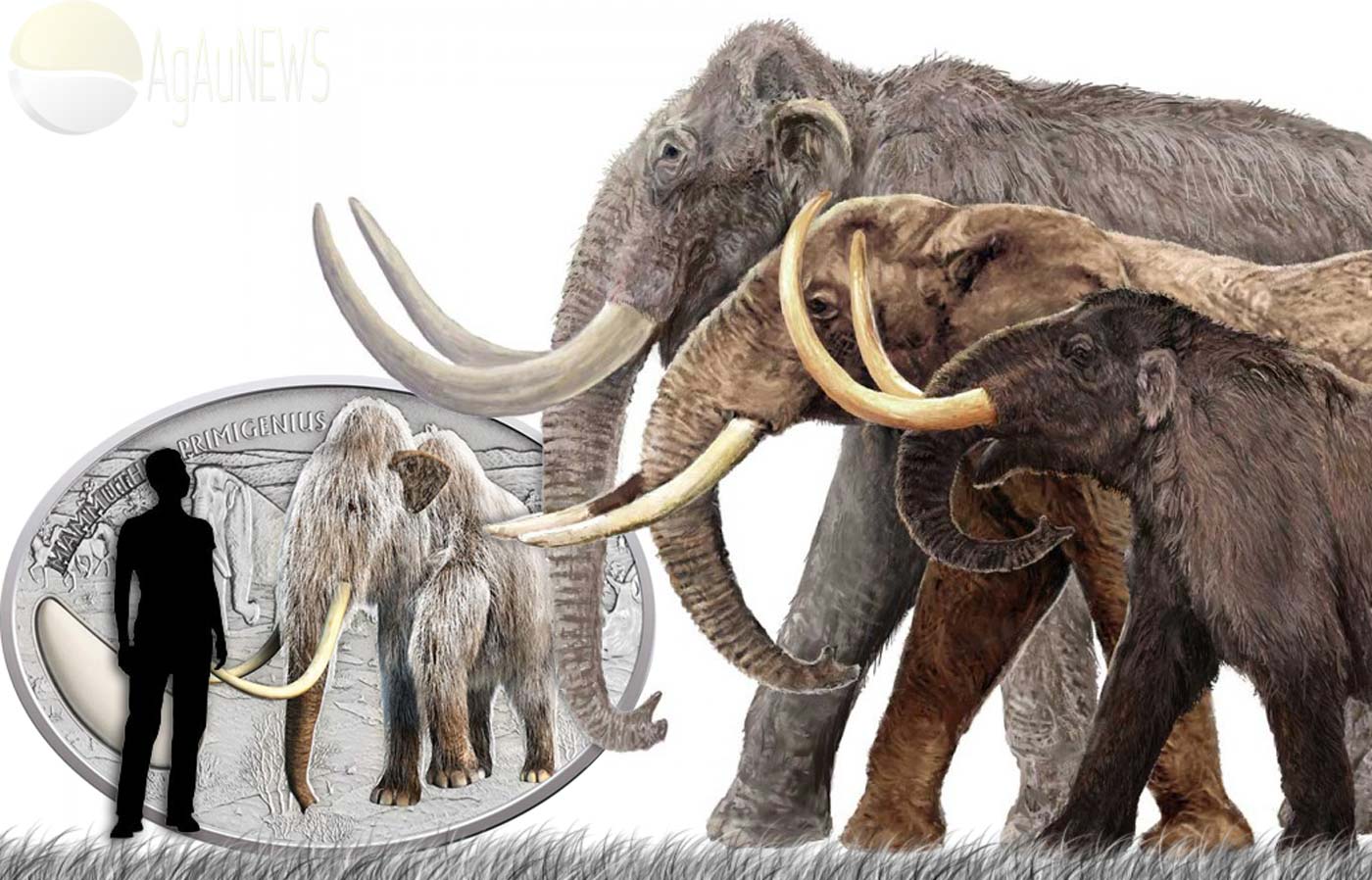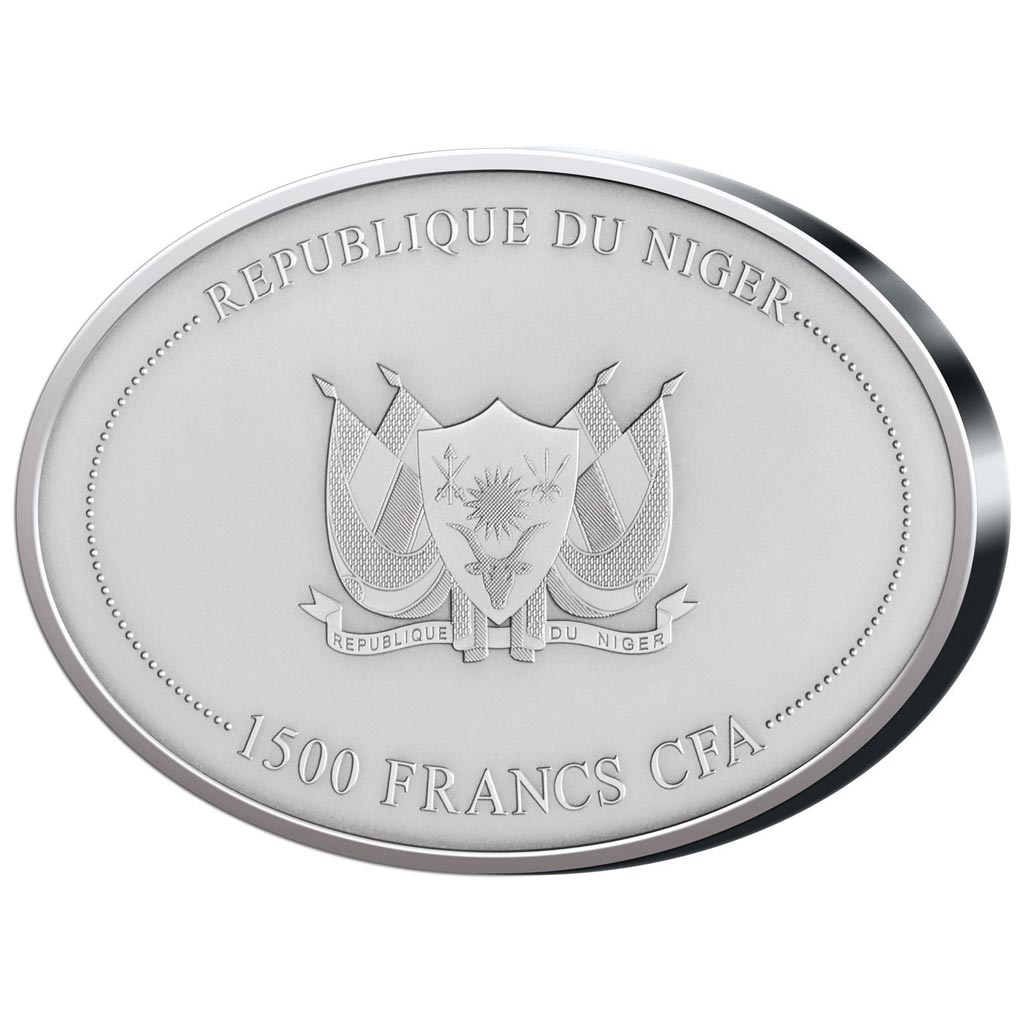The latest in the Jurassic park series of movies, Jurassic World, has just smashed the all-time box-office opening record by taking a simply staggering $500million in its debut weekend. Clearly the public love affair with the prehistoric natural world is as full of verve as it’s ever been, so anything with one of our humungous ancesters on it is bound to draw greater than normal interest. There have been some variable quality releases over the last few years, but the vast majority has been quite excellent.
Topping the list for us is the Austrian Mints superb Prehistoric Life: Back From the Dead series of five coins and the Royal Canadian Mints series of Canadian Dinosaurs. Alongside those are excellent coins from German producer MCI-Mint, the Perth Mint, and several others. Both our favourites are clean-struck coins devoid of adornment or colour. This makes our appreciation of this coin, which contains both, a surprise for me. Having purchased one of them and seen it in the hand, I can safely say the colouring is quite superb and does not detract in any way from the overall design. Embedded in the reverse side is a genuine piece of mammoth ivory, something amazingly enough in relatively plentiful supply, so don’t worry that a priceless fossil has been sacrified for numismatic vanity. It is however, a little overprocessed so not the most natural looking thing, but it’s a very minor quibble and overall, a nice touch. The basic artistic design is also excellent, and the whole fits the oval shape expertly.
Issued for the African state Niger, it joins the increasing number of modern commemoratives being issued from that continent in preference to the usual Oceanic states like Palau, Niue and Tuvalu. As usual, it carries the emblem/coat-of-arms of the country instead of the effigy of Queen Elizabeth II. The packaging is overall pretty good. The snapper case is of decent quality, although lacking any customisation, but the outer shipper sleeve is very attractive, and the certificate, while unnumbered, informative enough. It looks like the coin serial number is etched into the lower edge rim.
This one has been available for a week or so and is selling for around $150/US$200. No doubt stackers will complain that it’s a hefty chunk of change for two ounces, but we think the price is decent enough. Think about it; 2oz of antiqued silver, inset fossil fragment, high-end colouring and a mintage of just 975 hardly scream of a budget job, and the coin has clearly been a labour of love for the producer. Sadly, it’s another of those that just appear on the market with minimal information or notice, but we’re going to do our best to track down the issuer to see about future plans, so if you’re reading, drop us an email please. Highly recommended, and our thanks to Marcin at Polish-Coins for help with the images.
MAMMUTHUS PRIMIGENIUS
The Woolly Mammoth was a species of mammoth that lived during the Pleistocene epoch, and one of the last in a line of mammoth species, beginning with Mammuthus subplanifrons in the early Pliocene. The woolly mammoth diverged from the steppe mammoth about 400,000 years ago in eastern Asia. Its closest extant relative is the Asian elephant. The appearance and behaviour of this species are among the best studied of any prehistoric animal because of the discovery of frozen carcasses in Siberia and Alaska, as well as skeletons, teeth, stomach contents, dung, and depiction from life in prehistoric cave paintings.
The woolly mammoth was roughly the same size as modern African elephants. Males reached shoulder heights between 2.7 and 3.4 m and weighed up to 6 tonnes. A newborn calf weighed about 90 kilograms. The woolly mammoth was well adapted to the cold environment during the last ice age. It was covered in fur, with an outer covering of long guard hairs and a shorter undercoat. The colour of the coat varied from dark to light. The ears and tail were short to minimise frostbite and heat loss. It had long, curved tusks and four molars, which were replaced six times during the lifetime of an individual. Its behaviour was similar to that of modern elephants, and it used its tusks and trunk for manipulating objects, fighting, and foraging. The diet of the woolly mammoth was mainly grass and sedges. Individuals could probably reach the age of 60. Its habitat was the mammoth steppe, which stretched across northern Eurasia and North America.
The woolly mammoth coexisted with early humans, who used its bones and tusks for making art, tools, and dwellings, and the species was also hunted for food. It disappeared from its mainland range at the end of the Pleistocene 10,000 years ago, most likely through climate change and consequent shrinkage of its habitat, hunting by humans, or a combination of the two. Isolated populations survived on St. Paul Island until 6,400 years ago and Wrangel Island until 4,000 years ago. After its extinction, humans continued using its ivory as a raw material, a tradition that continues today. It has been proposed the species could be recreated through cloning, but this method is as yet infeasible because of the degraded state of the remaining genetic material. (Source: Wikipedia)
ADVERTISEMENTS
SPECIFICATION
| DENOMINATION | COMPOSITION | WEIGHT | DIAMETER | FINISH | MINTAGE | BOX / COA |
|---|---|---|---|---|---|---|
| 1,500 FRANCS | 0.999 SILVER | 62.20 g | 60.0 x 40.0 mm | ANTIQUE | 975 | YES / YES |










I see that APMEX is carrying a T Rex coin with the same shape and format. The issuing country for the T Rex coin is Congo I hop you can determine who is producing these.
That’s what we’re trying to do at the moment. Been sitting on this and the T-Rex for a while waiting on information as we worry that the coins may never ship. This one has and likely the T-Rex will, but getting information on a lot of these small anonymous releases does my head in and takes an inordinate amount of effort. The coin business is so insular in many ways and marketing often non-existent.
Good news. Sourced the supplier and ironically, it’s someone I know well that distributes it for someone else. More info up later this week.
Powercoin Italy & Apmex has them if you are interested. (Wooly Mammoth).
Thanks. I bought mine from Powercoin as the price seemed to be lower than even eBay. Thought I bought the last one but another 22 have appeared for sale.Very nice coin and the colouring in particular is very well done.